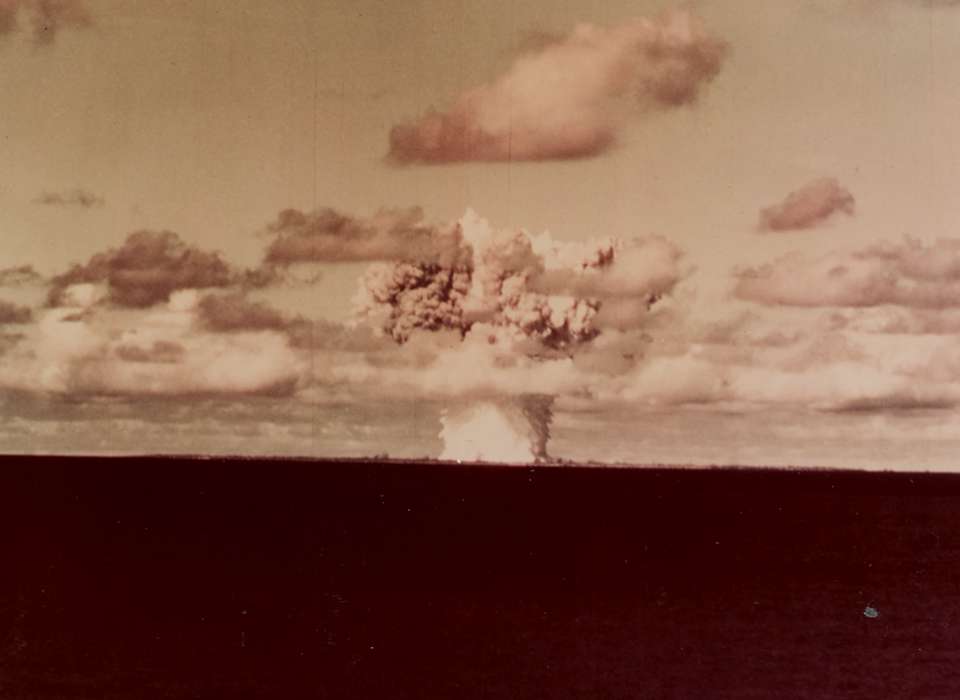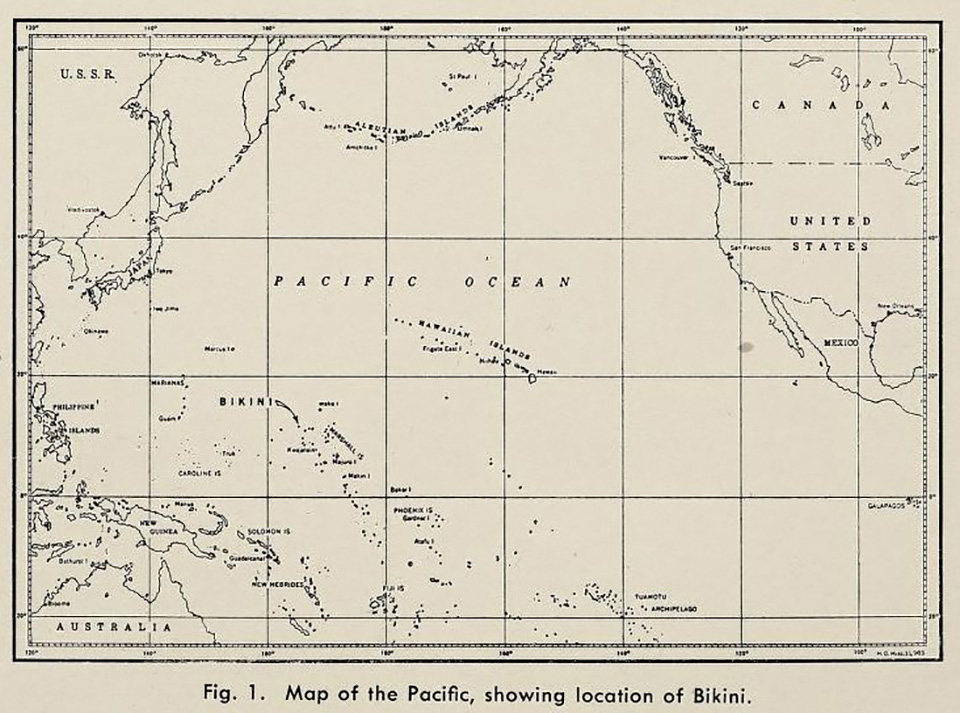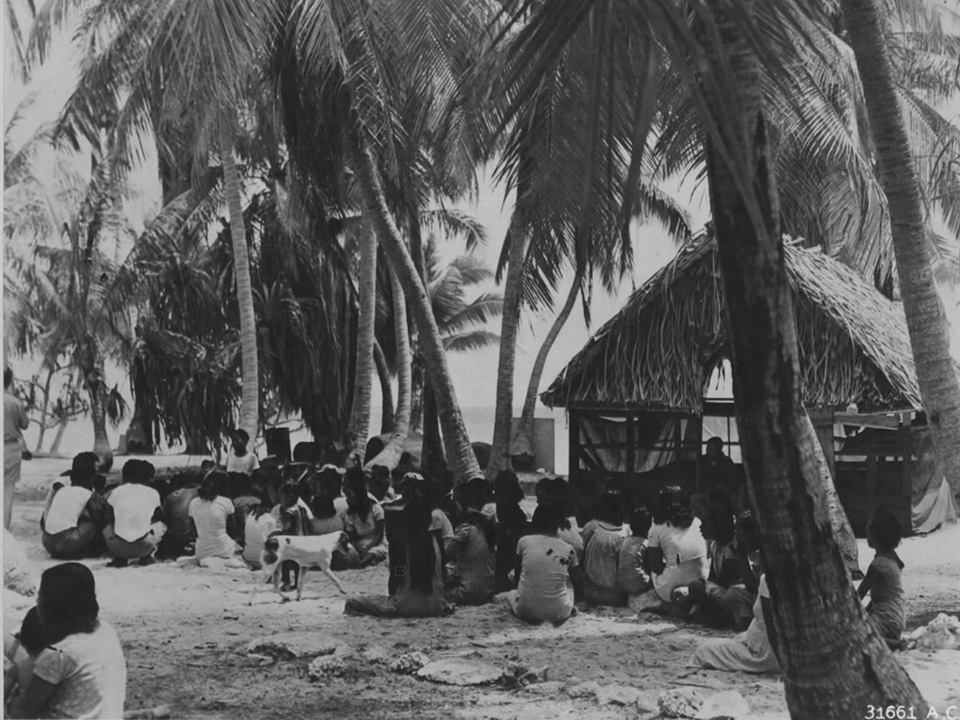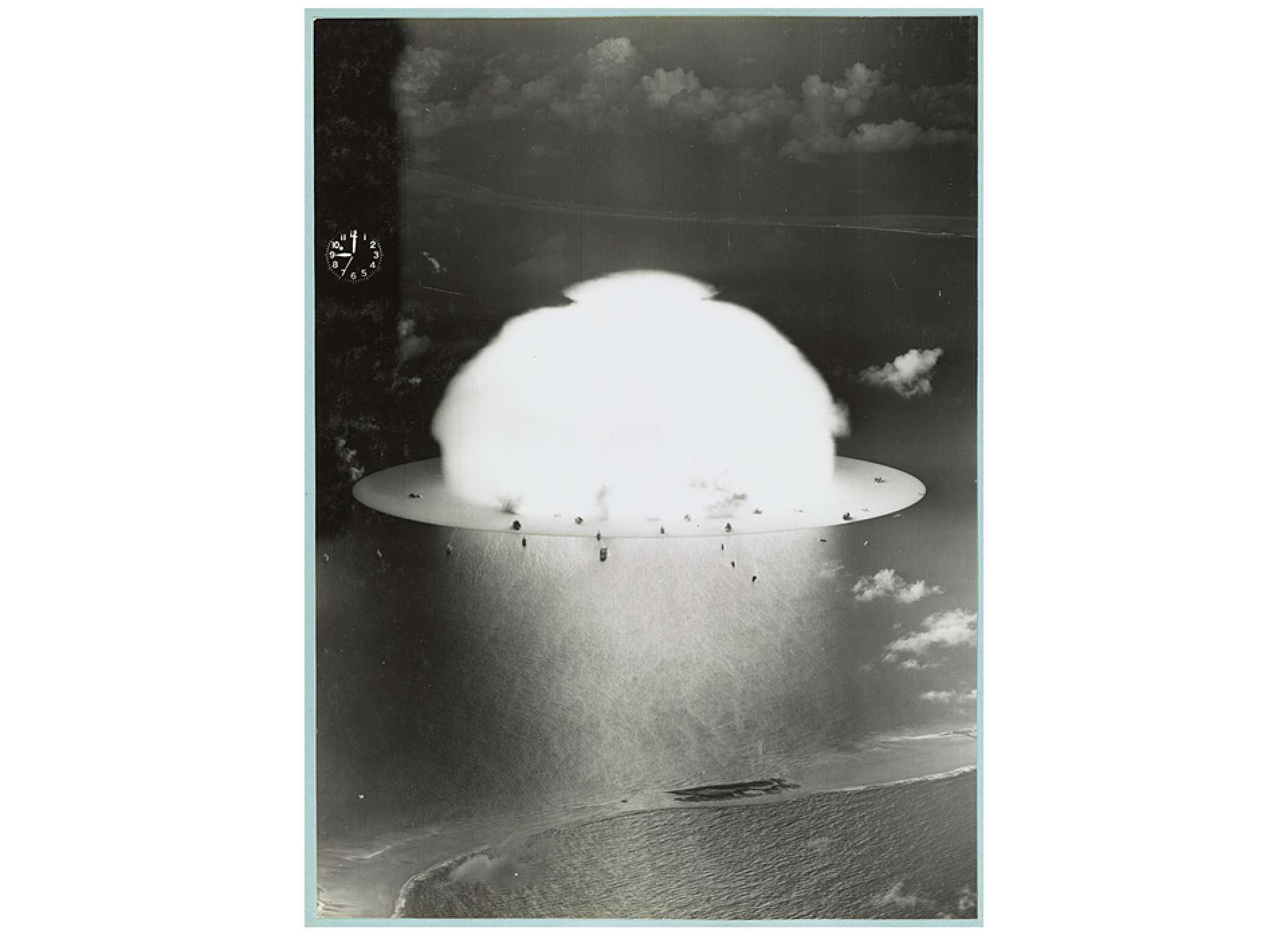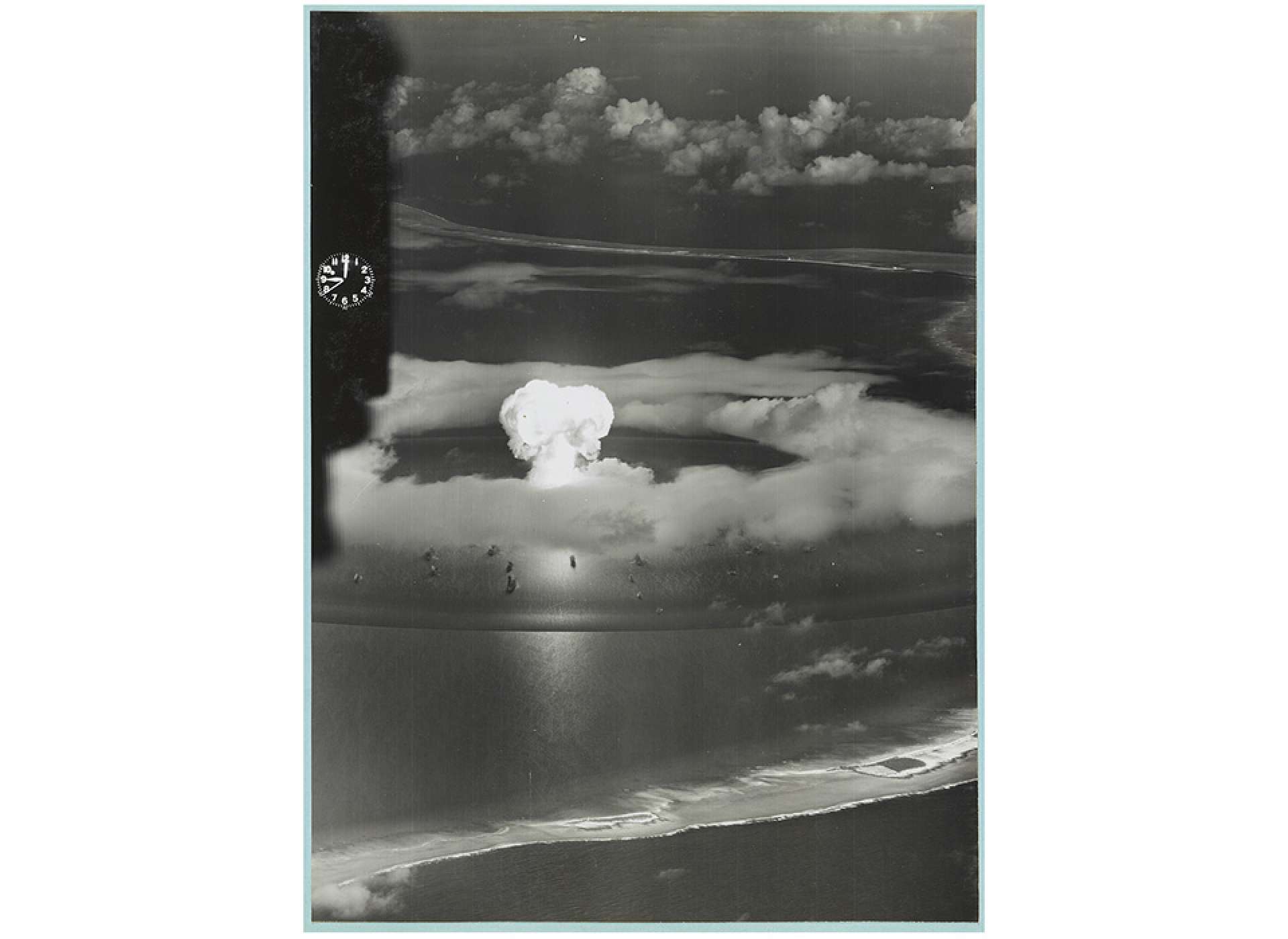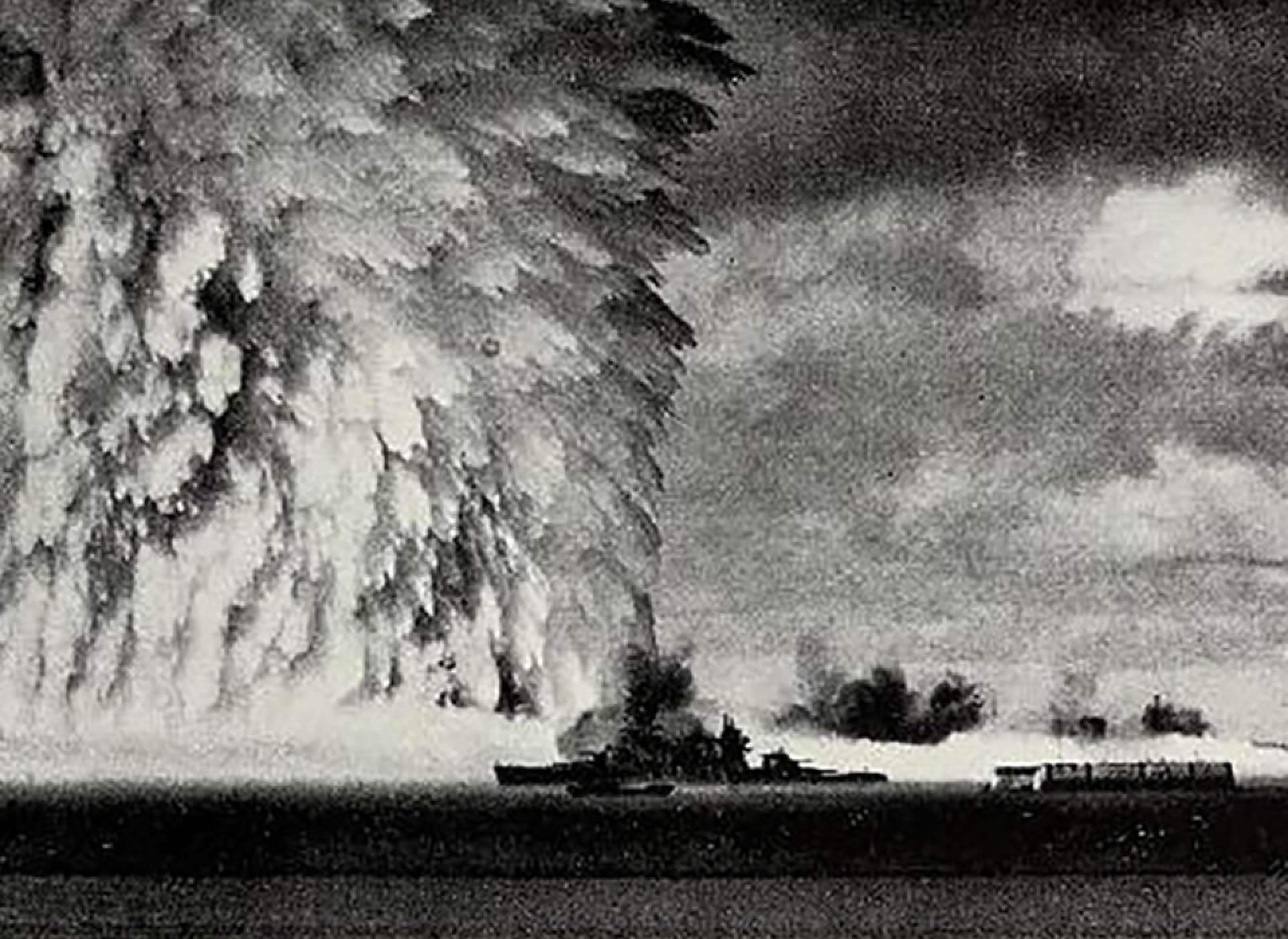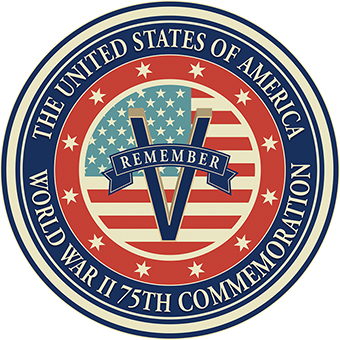Top Image: Map of the Pacific. The Bikini Atoll is to the left, part of the Marshall Islands. Map from Bombs at Bikini, via the Smithsonian Library.
The United States emerged from the crucible of World War II as an industrial superpower with a weapon that could revolutionize warfare—an atomic bomb. Demobilizing more than 10 million service personnel, returning to a peacetime economy, and creating world order were enormous, immediate challenges in late 1945. At the same time, the secret of the atomic bomb was out, and the clock was ticking on the United States’ nuclear monopoly. The pressure to move quickly seemed to grow with each passing month.
Military leaders and planners struggled to understand what the bomb meant and how it was to be used, if at all. Nuclear strategy had not yet been invented and the radioactive consequences of the bombings of Hiroshima and Nagasaki were poorly understood. The US military, which had won a decisive victory, was determined to cement its superiority. The day after Emperor Hirohito surrendered, a US military advisor proposed to Secretary of the Navy James Forrestal a test of nuclear weapons on naval vessels to demonstrate their survivability. (The advisor, Lewis Strauss, would become the first chairman of the US Atomic Energy Commission when it was created the following year). The concept was thus born for “the most observed, most photographed, most-talked-of scientific test ever conducted”—laid out in the official report on Operation Crossroads.
By the numbers
US Personnel: 42,000
Bikini islanders displaced: 167
Ships assembled: 242
Ships sunk immediately: 5 on July 1; 9 on July 25
Airplanes: 156
Cameras: 750
Pressure gages: 5,000
Radiation detectors: 25,000
Goats: 204
Pigs: 200
Mice: 200
Guinea pigs: 60
Rats: 5000
Coffee: 4,000 lbs
Sugar: 11,000 lbs
Fruit: 38,000 lbs
Meat: 40,000 lbs
Vegetables: 89,000 lbs
Candy bars: 70,000
Unlike the Trinity test, the bombings of Hiroshima and Nagasaki, or many other nuclear tests, Operation Crossroads was no secret. The Joint Chiefs of Staff, who formally requested the operation, decided even before creating Joint Task Force One or designating Vice Admiral WPH Blandy as its commander in January 1946, that the test would be publicized and attended not just by American press, but also international press. Shaping public expectations created a dynamic all its own. More than a hundred US and foreign reporters attended the tests. Foreign officials, somewhat of an afterthought, attended from Australia, Brazil, Canada, China, France, Egypt, United Kingdom, Mexico, Netherlands, Poland, and Soviet Union as observers also.
Destroying a significant number of naval ships with a single nuclear weapon takes planning and time. Yet the first test was planned for May 15 because scientists involved in the war effort were eager to get back to civilian work, civilian scientists would want to be back at their universities by September, military personnel were being demobilized, and military budgets were expected to decline precipitously. Holding onto a surplus of target vessels also could not continue indefinitely. President Truman slipped the deadline six weeks to allow members of Congress to attend. In the end, just four Senators and nine congressmen attended Able; one senator and five congressmen attended Baker.
Map of the Pacific. The Bikini Atoll is to the left, part of the Marshall Islands. Map from Bombs at Bikini, via the Smithsonian Library.
Congress watched the progress of Operational Crossroads closely. Within two weeks of his appointment, Vice Admiral Blandy sat in front of a Senate committee, explaining in the Cultural Resource Assessment that “The ultimate result of the tests, so far as the Navy is concerned, will be their translation into terms of United States sea power. Secondary purposes are to afford training for Army Air Forces personnel in the attack with the atomic bomb against ships and to determine the effect of the atomic bomb upon military installations and equipment.” In short, the Navy and Army needed to prepare to fight (and survive) a nuclear war. Congress did not fully authorize the tests until June 14, little more than two weeks from the countdown. In the meanwhile, questioning was intense.
Lurking underneath the rational military planning were bureaucratic fears. Admiral Blandy was proud of choosing the name for the operation himself and underlined its importance with this description:
“because seapower, airpower, and perhaps humanity itself—are at the crossroads.”
Admiral Blandy
Airpower and seapower both were integral to winning in the Pacific theater of war, but the advent of aircraft-delivered nuclear bombs made observers wonder whether naval vessels were now obsolete. The Navy set out to prove the opposite and in the process, invented a role for itself in delivering nuclear ordinance.
Three tests were envisioned for Operation Crossroads: a Hiroshima-like burst (Able shot), a shallow underwater burst (Baker), and a deeply submerged explosion (1000-2000 feet below the surface). The Baker shot produced so much contamination that President Truman cancelled the third test.
Objections to Operation Crossroads
The public nature of the tests exposed them to more scrutiny, both inside and outside the government. Some critics objected to the cost of the tests, including the sinking or scuttling of scores of US ships, even if they were deemed to be a surplus after the war. The ships designated as targets for the tests would have constituted the 6th largest navy at the time and, ironically, the Navy repaired a few before their imminent demise to make the test more realistic.
Other critics wondered if the tests were too provocative to foreign competitors and US officials made a point of explaining that the target array did not mirror any real-world navy. US nuclear scientists questioned the scientific value of the tests, and the possibility for severe radioactive contamination from an underwater explosion. Los Alamos National Laboratory scientists conjectured in an official memo from Henry Newson that water around a recent surface explosion would be “a witch’s brew… [and] There will probably be enough plutonium near the surface to poison the combined armed forces of the United States at their highest wartime strength.”
To make matters worse, the Army Air Force wanted the test to demonstrate the vulnerability of Navy ships while the Navy wanted to demonstrate the robustness of its ships. Ultimately, the lessons drawn from the tests had nothing to do with the survivability of the US fleet. Instead, the classified Final Report of the Joint Chiefs of Staff stated that “If used in numbers, atomic bombs not only can nullify any nation’s military effort, but can demolish its social and economic structures and prevent their reestablishment for long periods of time.
With such weapons, especially if employed in conjunction with other weapons of mass destructions, for example, pathogenic bacteria, it is quite possible to depopulate vast areas of the earth’s surface, leaving only vestigial remnants of man’s material works….Dominance in the ability to wage atomic warfare, the loss of which might be fatal to our national life, can be retained only by unflagging effort to hold that leadership.” The seeds of the nuclear arms race, preemptive strikes, and mutually assured destruction are all found in the Joint Chiefs of Staff Evaluation Board report.
Small objections were raised by congressmen during hearings regarding whether enough was being done for the 167 inhabitants of the Bikini atoll who were asked to relocate. The military had moved the islanders to Rongerik atoll on March 7, building houses for them. No one could have predicted that these so-called “nuclear nomads” would never return for good.
Some of the evacuated natives sit together on Rongerik Island, not yet aware that they would never be able to return to their home islands in the Bikini Atoll. USAAF image retrieved via fold3.com.
Conflicting Impulses
US nuclear history is rife with contradictions and tensions, particularly between a desire for peace and honing nuclear war capabilities. On the day of the Nagasaki bombing, President Truman had announced that the United States would seek the means “to control the bomb so as to protect ourselves and the rest of the world from the danger of total destruction.” Within three months, Truman met with UK Prime Minister Atlee and Canadian Prime Minister King and together proposed a UN atomic energy commission that would control atomic energy to ensure peaceful uses through the establishment of safeguards and inspections and through the elimination of nuclear weapons. The first resolution passed by the brand new United Nations General Assembly in January 1946 created the UN Atomic Energy Commission.
It was to this international commission that Bernard Baruch proposed, on June 14, 1946, a practical way of implementing disarmament, drawing upon the Acheson-Lilienthal report. That same day in Washington, senators formally authorized Operation Crossroads. In the words of one journalist, Gram Swing, ABC radio commentator: “At Bikini, the Navy is preparing itself for the failure of the UN Atomic Energy Commission. On the one hand, we’re striving to rid the world of a weapon which may set back civilization for centuries…and on the other hand, we’re training ourselves in the use of this very weapon. So we strive to save civilization, and we learn how to wreck it, all on the same weekend.”
Civilians were not only focused on promoting international control of weapons, but civilian control of nuclear weapons at home. Since 1944, officials recognized the need for a post-war civilian commission but initial variations had heavy military representation. By mid-1946, Senator Brien McMahon’s legislation prevailed and President Truman signed the US Atomic Energy Act into law on August 1. None of this prevented the nuclear bureaucracy from gearing up to incorporate nuclear weapons into the evolving US military structure. At the end of the war, the US arsenal of atomic devices was empty. But, the vast industrial machinery that produced the Hiroshima and Nagasaki bombs was still in place. Within a year, the stockpile grew to nine weapons, and with them, plans for military tests.
The Able (July 1, 1946) and Baker (July 25, 1946) Shots
According to government documents, both implosion, plutonium-based devices used in the Able and Baker tests were identical in yield but vastly different in results. The Able device was air-dropped by a B-29 that missed its target by a half-mile on the morning of July 1, 1946. The device detonated about 158 meters above the Nevada and hit several ships carrying instrumentation so that significant data was lost. The same mistake in the dry-run—the signal to turn on recording equipment was 10 seconds late—was repeated in the actual bomb-drop, resulting in the failure of dozens of cameras, spectrographs, and shock-wave instruments to record anything at all. Still, the airburst weapon, nicknamed “Gilda” after a Rita Hayworth movie released that year, caused considerable, but not spectacular damage to the ships. Most importantly, the airburst avoided seriously contaminating the ships, allowing observation the very next day. About a third of the US journalists present at the Able shot decided not to stay for Baker.
The Baker underwater shot was a different story. The bomb, dubbed “Helen of Bikini,” was detonated on the morning of July 25, 1946. According to the government’s Historical Radiological Assessment, “The first effect of the blast was a tremendous bubble of water and steam that broke the ocean’s surface. Then a huge wave, over 90 feet high, later called a base surge, rolled over target and support vessels as well as the islands of the atoll. Vast quantities of radioactive debris, primarily consisting of fission products (radioactive elements resulting from the fission, or splitting, of the bomb’s plutonium), unconsumed plutonium from the bomb’s fissioning core, and radioactive sand and coral that had been irradiated by the intense neutron radiation from the blast rained down on the target and support ships, islands, and lagoon. This unexpected outcome caused contamination of both target and support ships, the extent of which depended on each ship’s position relative to the zero point of the blast. Twelve of the ships in the immediate area of the detonation sank immediately or within hours.”
-

As one of the bombs detonates, the ships used as targets and test subjects can be seen contrasted against the explosion. Image from the Library of Congress Prints and Photographs Division.
-

The bomb’s mushroom cloud expands upwards as a shockwave become visible on the water’s surface, extending through the ships and towards the island. Image from the Library of Congress Prints and Photographs Division.
-

The water column created by the second bomb was more than 500 feet high, dwarfing the large ships nearby. Image from Bombs at Bikini, via the Smithsonian Library.
No one had experience with decontaminating radioactive ships. Some ships were too radioactive to be boarded at all in the first week and thereafter, for little more than a few minutes. The support fleet itself became radioactively contaminated, as stated in the Nuclear Test Personnel Review, from marine life in the lagoon. By August 10, the decision was made to tow ships to Kwajalein atoll for decontamination and to sink or scuttle others. Eventually, eight major ships and two submarines were towed back to Hawaii and the West coast of the United States for inspection and decontamination. Animals retrieved from the ships that were still alive in August had mostly died of gamma poisoning by November 1946.
One of the deadly illusions of the 1946 nuclear tests was that a nuclear war could be fought, and maybe even won. The tests demonstrated that some military equipment outside the “red zone” could survive a blast and radiation in some circumstances (a relatively “clean” detonation like Able) but not in others (a dirty one like Baker). The Able shot lulled observers into a false sense of security, whereas the Baker test conveyed the deadlier risks of radiation. A ship could be seaworthy but still untouchable. The conclusions of the Joint Chiefs of Staff Evaluation Board underscored the deadliest illusion of them all: that racing ahead to develop tens of thousands of tactical and strategic nuclear weapons brought security rather than risks.
Timeline of Events
1945
- August 6: Bombing of Hiroshima
- August 9: Bombing of Nagasaki
- August 16: Lewis Strauss (who chairs the US Atomic Energy Commission when it is created) recommends to Secretary of Navy James Forrestal that a nuclear test be conducted against naval ships to demonstrate survivability
- August 27: Senator Brien McMahon proposes nuclear test against Japanese ships to demonstrate vulnerability
- October 27: US Fleet Admiral Ernest King proposes to use US surplus ships (80-100)
1946
- January 11: President Truman appoints Vice Admiral William H.P. Blandy to chair Joint Task Force One to conduct tests
- January 24: UN Atomic Energy Commission established; Operation Crossroads announced
- March 7: 167 Bikini islanders relocated to Rongerik atoll
- March 28: Acheson Lilienthal report issued on international control of atomic energy
- June 14: Bernard Baruch delivers Baruch plan to UN Atomic Energy Commission while Congress authorizes Operation Crossroads
- July 1: Able 23-kiloton airburst detonation (158 meters above target)
- July 25: Baker 23-kiloton underwater detonation (90 feet below)
- August: 1 Atomic Energy Act signed by President Truman, placing nuclear weapons under civilian control
Conclusion
The Able and Baker “shots’’ were the first of many atmospheric nuclear tests conducted in the Marshall Islands between 1946 and 1958. The most infamous was the March 1, 1954 hydrogen bomb test (Castle Bravo) that went wrong. Designers expected a five-megaton yield, but miscalculated the reactivity of one of the bomb’s components, lithium-7. The 15-megaton test destroyed Namu island and the four-and-a-half-mile wide fireball could be seen 250 miles away. Contamination reached across 100 miles, affecting 15 islands and atolls. Worse still, inhabitants were not evacuated for two days. The contamination of a Japanese fishing boat (The Lucky Dragon) 60 miles away led to some observers calling Castle Bravo the “second Hiroshima.” Radioactive contaminants were detected as far away as India, Japan, Australia, and Europe, prompting worldwide condemnation and a halt by the United States and Soviet Union of atmospheric testing between 1958 and 1961. In 1963, states negotiated the Partial Test Ban Treaty, which forever banned atmospheric tests.
The Bikini inhabitants relocated several times, at some points literally starving because the alternative atolls and islands could not sustain them. In 1968, President Lyndon Johnson declared the Bikini atoll fit for repopulation, based on an Atomic Energy Commission analysis. That analysis tragically underestimated the radiation contamination by a factor of 100, so that residents who returned to the atoll wound up leaving by 1978.
Today, the Bikini atoll is popular among adventure divers. The coral reefs are returning and some say the fish are safe to eat. But it is not possible to drink the water or eat the coconuts, making the atoll uninhabitable. The dream of returning is, for the Marshallese, the final deadly illusion created by Operation Crossroads.
Meet the Author
Sharon Squassoni, Research Professor, Institute for International Science and Technology Policy, Elliott School of International Affairs at The George Washington University
Sharon Squassoni’s research, writing, and policy-making have focused on reducing risks from nuclear energy and weapons for three decades. She has held senior positions at the State Department, Arms Control and Disarmament Agency, and the Congressional Research Service, as well as the Carnegie Endowment for International Peace and the Center for Strategic and International Studies. Squassoni is on the Science and Security Board of the Bulletin of the Atomic Scientists, the PIR Center, and the Center for Arms Control and Non-Proliferation. She received a Bachelor of Arts degree from The State University of New York, a master’s in public management from the University of Maryland, and a master’s in national security strategy from the National War College.
This article is part of a series commemorating the 75th anniversary of the end of World War II made possible by the Department of Defense.
Cite this article:
MLA Citation:
APA Citation:
Chicago Style Citation:
